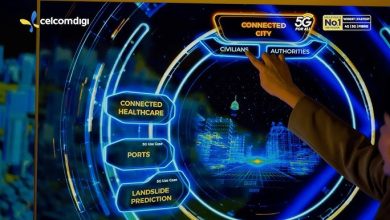New Forrester Report Highlights Double-Edged Impact of Disruptive Tech on Sustainability
Advancing Climate Goes While Creating Major Challenges at the Same Time

Forrester has just published a new report, “Jekyll And Hyde: The Dual Role of Disruptive Technologies in Sustainability,” that unpacks the double-edged impact of disruptive technologies like automation, Artificial Intelligene (AI), and Internet of Things (IoT) on environmental sustainability. Specifically, the Forrester report explores how these tools can advance climate goals but also create significant challenges, including increased resource intensity and electronic waste.
The Forrester report also analyses how six leading disruptive technologies will shape sustainability efforts through 2025. Balancing the benefits and challenges of these technologies is critical for businesses aiming to drive long-term sustainability impact and ensure compliance with evolving environmental regulations.
Key Highlights from Forrester Report
- Automation and AI boost sustainability through efficiency and environmental monitoring but risk increased energy use, inefficiencies, and challenges like data security and AI unpredictability.
- IoT improves sustainability through monitoring and optimisation but risks increased e-waste, carbon footprints, and battery disposal challenges.
- Advanced data centres boost AI efficiency with technologies like liquid cooling, heat reuse, and modular design, but risk higher energy demand, e-waste, and reliance on scarce materials.
- Autonomous mobility optimises transport efficiency with drones, delivery robots, and truck platoons, but risks increased vehicle proliferation and resource strain due to reduced operational costs.
“Disruptive technologies such as automation, AI, and autonomous mobility can boost environmental sustainability, but they can also work against it, creating a true Jekyll-and-Hyde duality that leaders must manage,” said Abhijit Sunil, Senior Analyst at Forrester. “The challenge lies in maximising the optimisation potential of these technologies while actively managing their lifecycle impacts and resource intensity.”
Breaking Down the Forrester Report More
In his blog about the Forrester report, Sunil provided additional insights:
Disruptive technologies (referring to automation, AI, and autonomous mobility) bring high compute demands, increased electronic waste, reliance on critical raw materials, complications to the supply chain, and substantial infrastructure required for deployment. But these disruptive technologies also boost environmental sustainability if used in savvy ways. They enhance energy and resource efficiency, support climate resilience and compliance, enable real-time tracking of environmental KPIs, enable new sustainable business models and products, and advance conservation efforts.
An immediate positive of AI is that it transforms sustainability reporting by automating data analysis, aligning disclosures with regulatory frameworks, and customising content for diverse stakeholders. Beyond reporting, AI can support core sustainability initiatives such as climate risk forecasting, energy optimisation, emissions reduction, and supply chain resilience. But AI also introduces significant environmental challenges. The water demand to cool and energy to train and run large models raise concerns about resource use, especially in constrained regions. As AI adoption accelerates, sustainability and technology leaders have a critical role to play in guiding its use.




